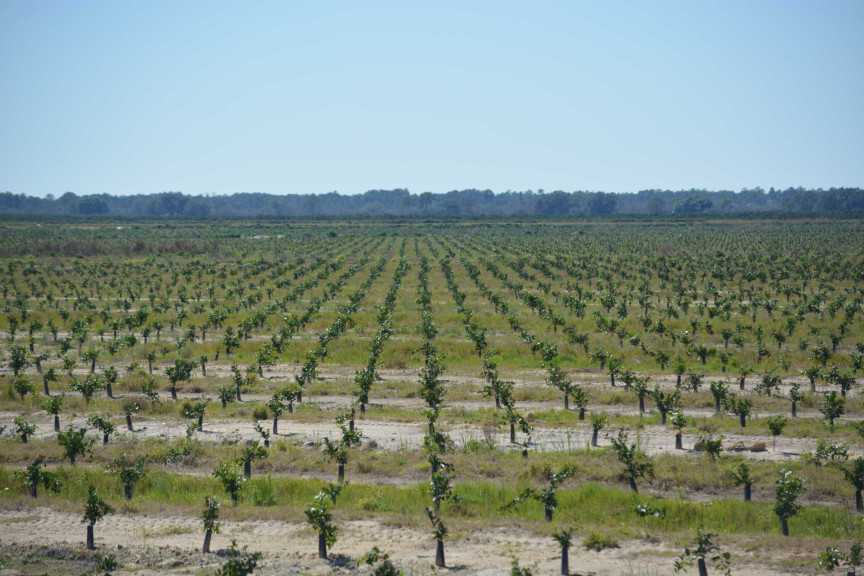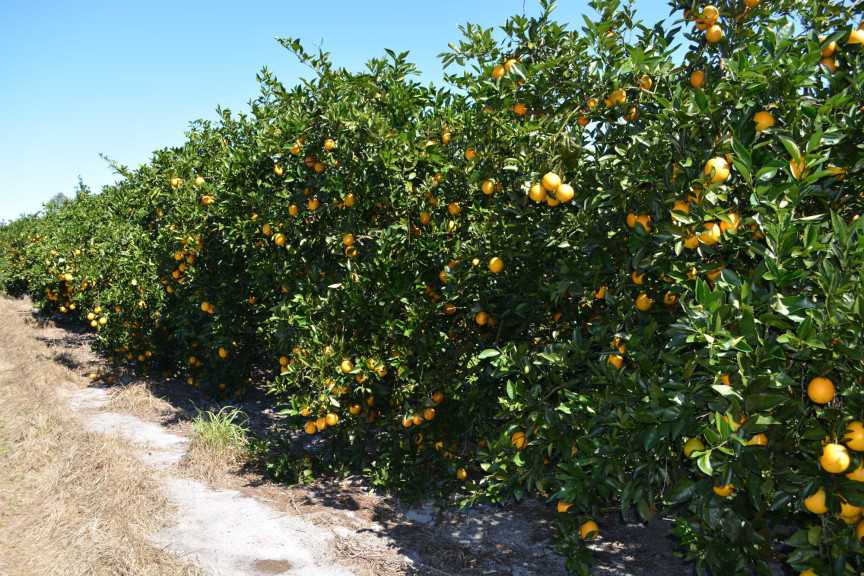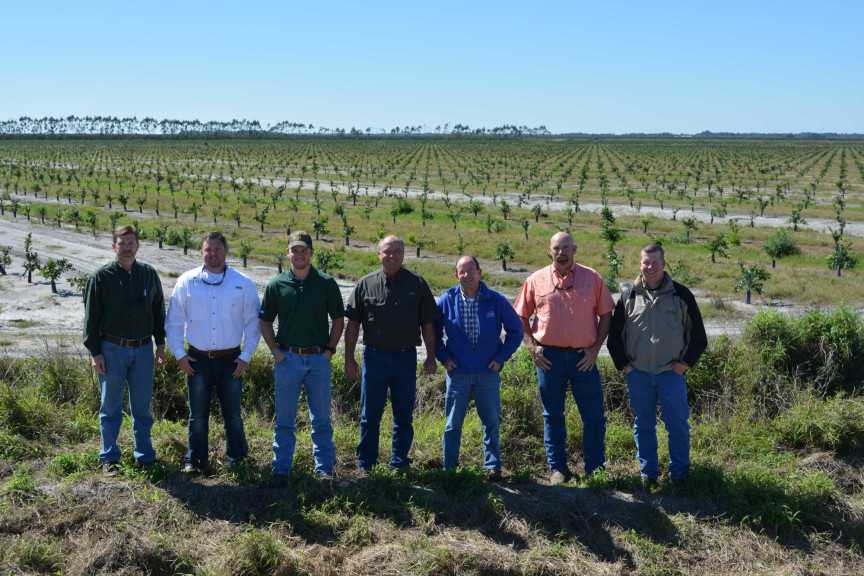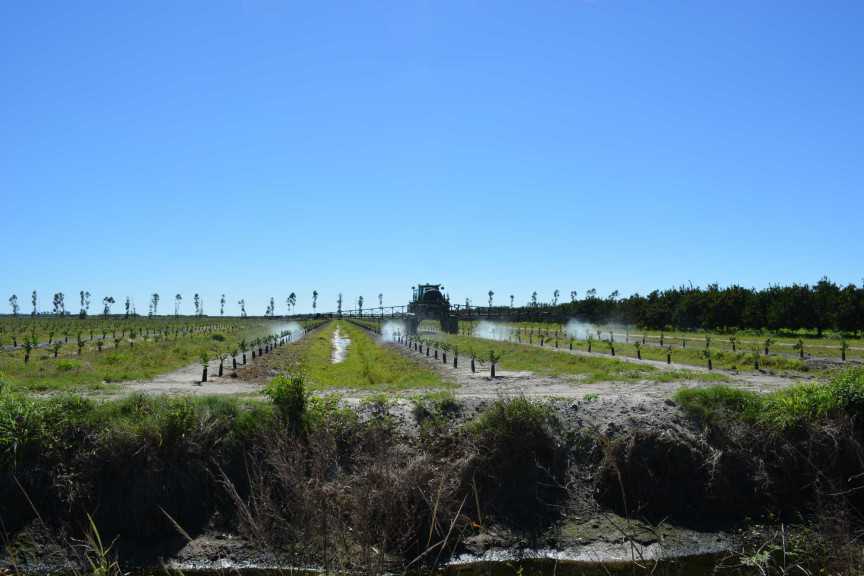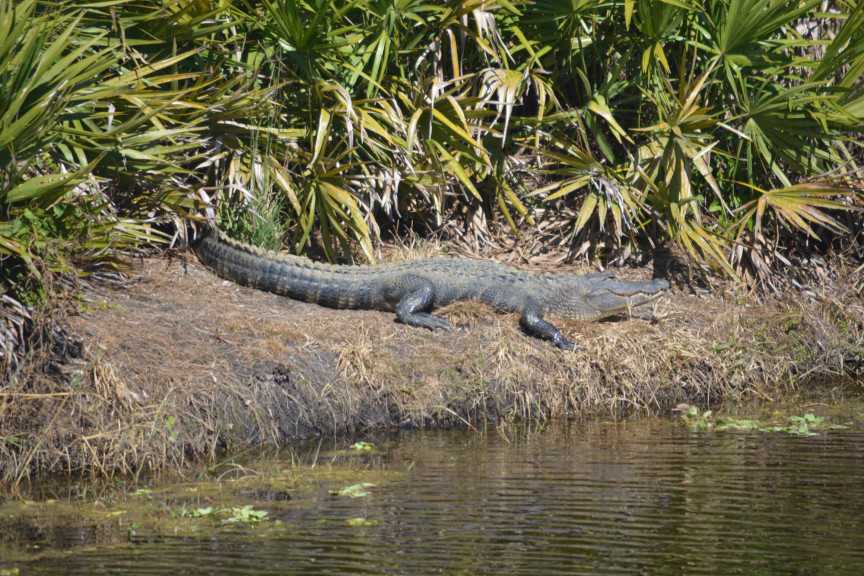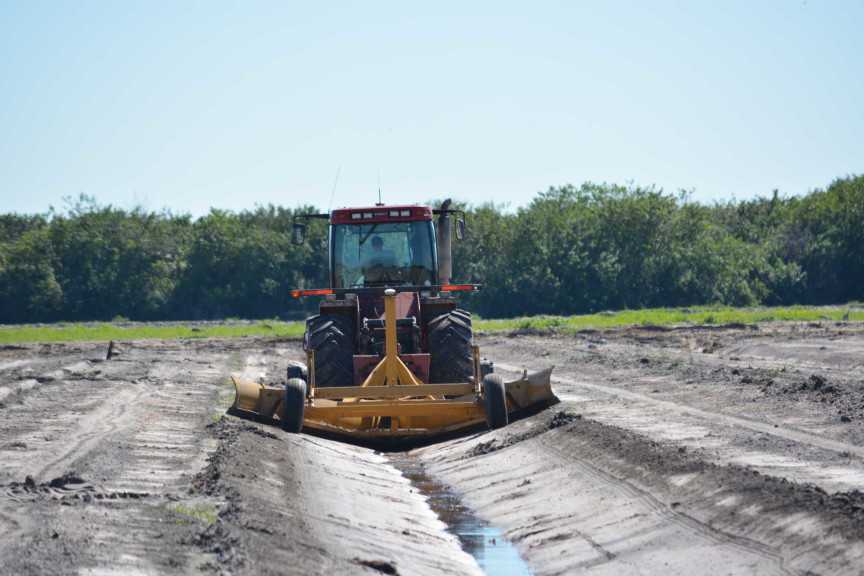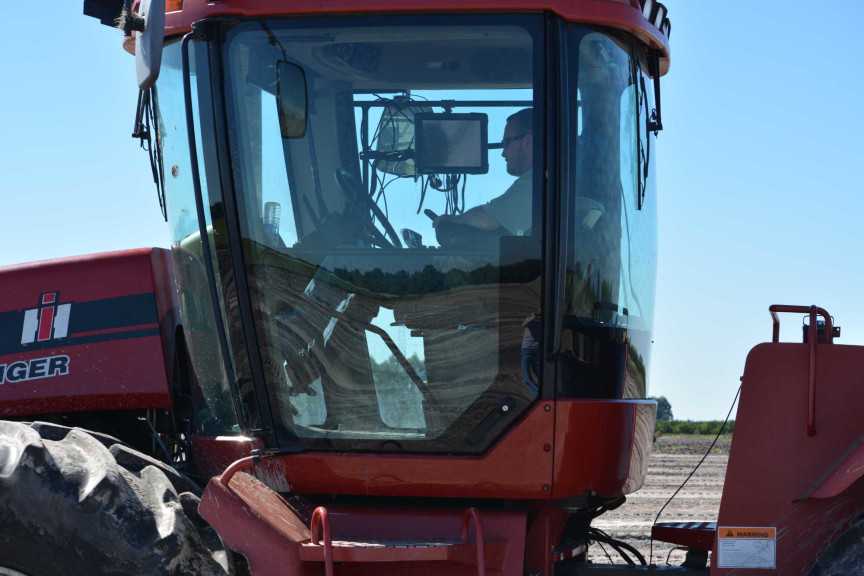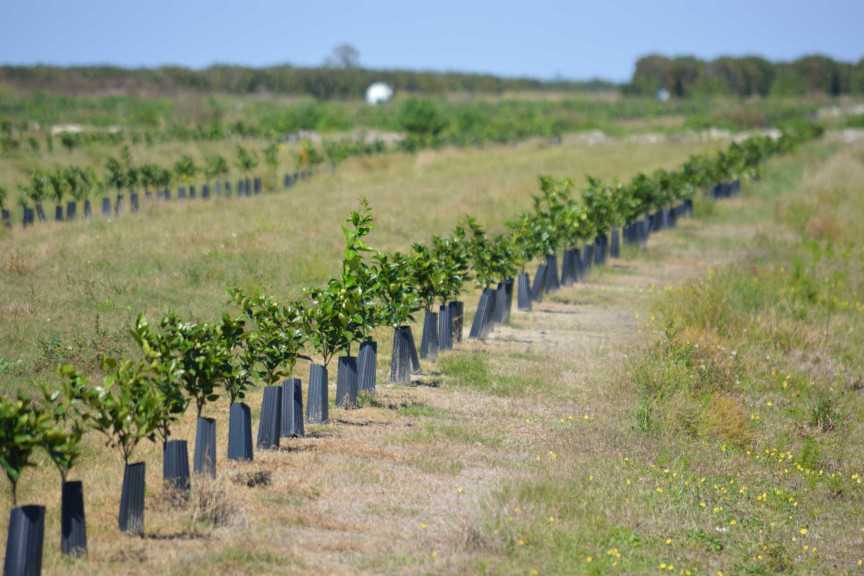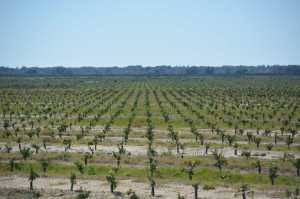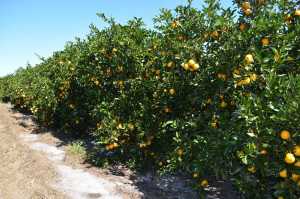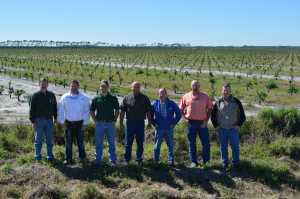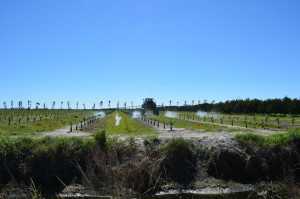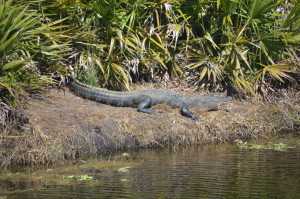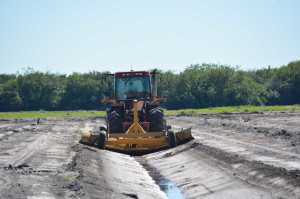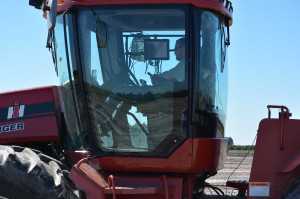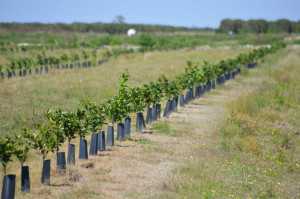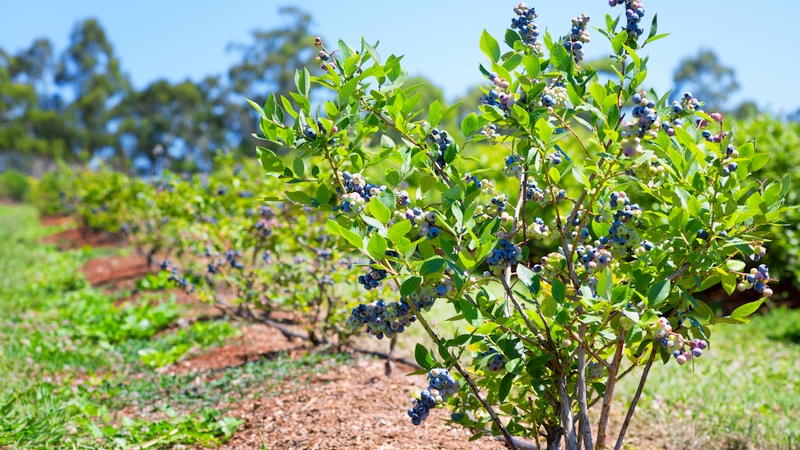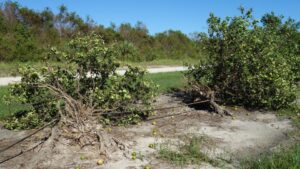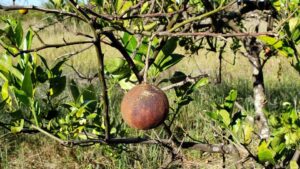Duda Citrus Division’s Big Planting Makes Bigger Statement
[blackoutgallery id=”57807″]
The math is simple. On average, about 3.5% of Florida’s citrus trees are lost per year with only 2% being replanted. Even without losses due to diseases and weather, tree populations in Florida are declining by 1.5% every year, setting the industry on a path of diminishing production.
Growers face a more difficult decision when planting because of the uncertainty surrounding the future of citrus markets and the progression of HLB. Last year, Coca-Cola stepped up to the plate along with Peace River Citrus Products and Cutrale Citrus Juices to provide 20-year contracts with growers to encourage replanting. While there is no money supplied up front, it does set a floor price to provide a certain sense of security in making an investment in new plantings. The contract includes 25,000 acres worth of new citrus.
Duda Citrus Division has signed on for the program to buck the declining tree population trend. “We were fortunate that Peace River Citrus Products asked us to participate in the planting program,” says Rob Atchley, general manager of citrus groves for Duda. “The Coke project is all about managing variables. If you can at least limit your price exposure, then it really boils down to whether you believe you can make a crop. Based on what we’ve seen in our more recent plantings, we are more and more confident we can make the crops and get a return on investment — and more importantly, profitability.”
Last year, Duda planted about 1,000 acres of new groves on its property south of LaBelle. This year, another 1,700 acres are being planted. “While we are replanting these large blocks, we also are getting back on an aggressive three-year reset program on our established groves to get to 100% reset status.”
Atchley appreciates grower reservations about planting as HLB continues to spread. “We have HLB in every block, but we’ve been able to keep the expression level of the disease down to manageable levels,” he says. “We have some younger blocks that are almost seven years old that have been very successful. At five years old, we had a block that had a cumulative infection rate of only 2.5%.
“Three or four years ago, we might not have been so gung-ho to replant. What has given us confidence is since canker eradication and before the Coke deal, we put in about 1,000 acres of solid-set trees. We are getting some age on these trees now and they are yielding very well. That gives us more confidence.”
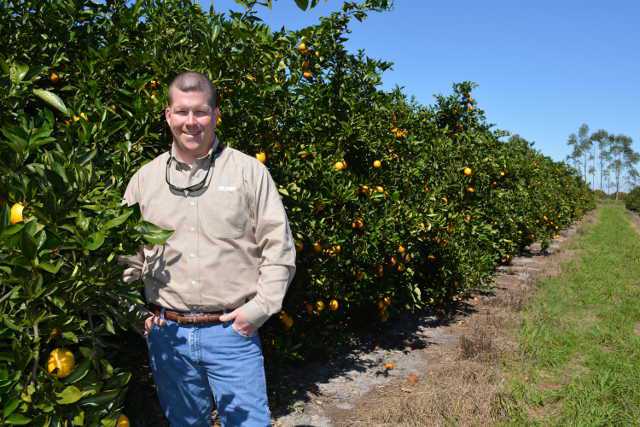
Rob Atchley
Photo by Frank Giles
Packing In More Trees
Atchley says the old way of doing things can’t apply to the new blocks going in on the farm. New rootstocks, densities, and giving trees everything possible to get off to a strong, stress-free start is a top priority.
“Traditionally, the company has favored Swingle and Carrizo rootstocks. And, those are well represented in this expansion project,” he says. “We have started doing more with US 897 because it makes good quality fruit and also is size limiting, which lends itself to planting higher density. Higher densities are culturally necessary to be more productive, more quickly.”
The production team also is looking at US 812, US 802, and US 942 based on production and tree size. “There is a lot of attention on the new rootstocks for tolerating HLB a little better,” says Atchley. “I hope that is the case, but how well they fit higher densities and our soil types is what’s driving our choices.”
Plantings are now closer to increase density. While 24-foot rows have been traditional and are still part of the mix, some new blocks will feature 22- and 20-foot spacing. “We are even putting in 600 acres at 18 feet,” says Atchley. “I really believe we are just getting where we want to be at 18- and 20-foot rows. The days of 25-foot row spacing are over.”
Boosting Young Growth
The new blocks on Duda have shown impressive early growth. Trees are not left wanting for nutrition during the critical early days. A slow-release fertilizer plays a role in getting young trees up and running.
“Traditionally, I have used controlled-release fertilizer products on young citrus trees,” says Atchley. “One of the challenges with greenhouse trees is they have really small root systems. We were forever trying to topdress those young trees to keep them going. We found the homogenous prill controlled-release material is safe enough to put down in the tree hole at planting.
“This does two things. It lasts for a long time, which saves us a ground fertilizer application. It also cuts down fertilizer movement outside the root zone from rain, which can be a problem on these newly built beds. Beyond that, we use a lot of foliar nutrition, which goes out about every three to four weeks.”
![The Duda Citrus Division production team [from left] Joby Sherrod, Brad Dicks, Matt Reichenbach, Curtis Slade, Same Jones, Mike Martin, and Rob Atchley stand sin front of a large new block at its LaBelle grove. Photo by Frank Giles](https://d3qz1qhhp9wxfa.cloudfront.net/growingproduce/wp-content/uploads/2014/03/Duda_group.jpg)
The Duda Citrus Division production team [from left] Joby Sherrod, Brad Dicks, Matt Reichenbach, Curtis Slade, Same Jones, Mike Martin, and Rob Atchley stand sin front of a large new block at its LaBelle grove.
Photo by Frank Giles
The nutrition program has provided results with strong growth and early productivity. “We have several blocks that were planted in late summer, and 27 months after planting, we had harvests in the 80 boxes per acre range,” says Atchley.
Protecting What You Planted
Protecting new plantings from HLB starts with an aggressive psyllid control program. Soil drench insecticide applications are the foundation of management efforts. Additional foliar applications are made to target other pests and avoid pest resistance.
“We utilize pretty much all of the materials labeled for psyllid control,” says Atchley. “You want to be responsible and rotate chemistries, so you are not raising super psyllids.
“We also scout very aggressively and have a team in the grove every other week checking for psyllids, other pests, and nutritional deficiencies.”
Growing citrus has undergone a sea change since HLB has come on the scene. Atchley says it has raised the bar in terms of production management if any chance of success is to be achieved. “Back when I first came to work with Duda in the late 1990s, you’d spray a couple of times per year and spread fertilizer three or four times,” he says. “Then the rest of the year, you were sort of a greens man. Today, we must be much more aggressive and manage a huge amount of information flow. You have to use the information and make management decisions in a timely manner and be more time sensitive on applications to the groves.
“I’ve had people sit across the table from me and tell me we are crazy replanting in the face of HLB. But, what we are doing here with our production approach, I feel confident we can make a go of this deal. We have blocks still viable after seven years and I have every reason to believe we can get 15 years or even more out of those plantings. Ultimately, if you are growing citrus 10 years from now, you will be rewarded for it.”
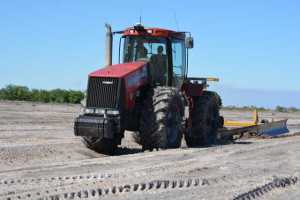
Photo by Frank Giles
Be Precise
Duda’s Citrus Division has placed a premium on collecting data and using the information for management decisions in its new and existing blocks. Precision agriculture techniques and tools are being used on the farm to facilitate the process.
A real time kinematic (RTK) tower has been placed on the farm for auto-correcting GPS signals. The system has enabled autosteer technology to precisely lay out new blocks more efficiently.
“We used to lay out groves with cables and measuring tape,” says Atchley. “At the old densities, we were spending around $45 to $50 per acre. Using our mapping, zoning, and autosteer technology, we can now lay these blocks out for well under $10 per acre even at much higher densities.
“The machine we use to map the grove shows us differences in the electrical conductivity of the soil. Using this data, we draw zone boundaries around areas with similar measurements. Because of this, a zone could be four or five acres or 100+ acres. The advantage of this method of measurement is that it eliminates the grid sampling method for setting up zone maps.”
The data also is used for precision soil amendments. “We pull soil and leaf samples and have maps for all of these things,” says Atchley. “So, we are addressing our nutrition and amendments more and more based on the maps to be more precise in our applications.”
In planting, the zone maps’ information also is directing what rootstocks are being planted. In addition, a herbicide rig on the farm utilizes autosteer technology.
“We’ve been able to use the precision ag tools and achieve a nice return to justify the investment,” says Atchley. “And, it has made some of the operations on the farm a lot more efficient.”





